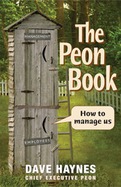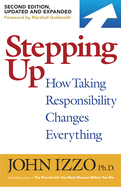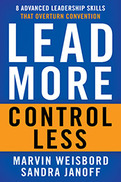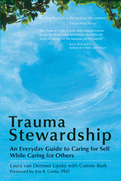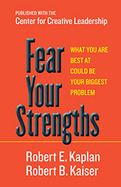2004
- Not written by an "expert"-learn from a living, breathing employee what does and doesn't work to get him motivated and productive
- Funny, irreverent, fast moving, and written in a direct, in-your-face style
- Packed with real-life examples that show the actual, sometimes unintended, effects of management actions on employees
Management books are traditionally written by industry "experts": scholars, consultants, senior managers. They're writing about how to manage workers, but none of these experts really understands the viewpoint of the average worker, the regular grunt in the trenches-the peon. Peons are the ones affected when a manager decides to manage-in-one-minute, to move somebody's cheese, to try that fifth discipline. Rather than consult some expert, why not go to the source, and ask the peons? Who better to teach you how to train a dog than the dog himself? And who better to tell you how to manage than one of those who are being managed? The Peon Book gives managers the perspective they've been lacking. Author and self-proclaimed Chief Executive Peon Dave Haynes' sole, powerful source of expertise is that he has been managed in different companies and in different industries, and he knows what worked-and what failed catastrophically. In irreverent, straight-talking terms, Haynes tells managers what they really need to do to make their employees motivated, committed, and productive-and it's not memorizing yet another "technique" or "strategy" or "discipline." Haynes writes in a common sense, easy-to-read style that is both witty and wise. Every boss can benefit, and every employee can empathize with the words in The Peon Book. "The inability to empathize can be a real speed bump on the road to a trusting, personal relationship with your employees. So how are you supposed to show more empathy? I take issue with management books that give you a phrase to say to show empathy like 'I understand,' or 'I know what you mean,' or that say that by rephrasing a statement you can show empathy. Don't use some coined phrase to show empathy, just mentally put yourself in our shoes. Sometimes it's just a matter of remembering what it's like to have to get all those reports turned in on a Friday. Or remembering what it's like to have to ask for time off. Or remembering what it's like to be the new guy on the job, and have a hard time remembering everything. Do you see the key concept I'm getting at? Empathy = remembering. Who said you'd never use math in the real world?"
- Not written by an "expert"-learn from a living, breathing employee what does and doesn't work to get him motivated and productive
- Funny, irreverent, fast moving, and written in a direct, in-your-face style
- Packed with real-life examples that show the actual, sometimes unintended, effects of management actions on employees
2020
—Jim Kouzes, coauthor of the bestselling The Leadership Challenge
All too often, the challenges we face seem overwhelming. Where do we start? What if we fail? But bestselling author John Izzo argues that almost every problem, from personal difficulties and business challenges to social issues, can be solved if all of us look to ourselves to create change rather than looking to others. And with the research to prove it, Izzo shows that by seeing ourselves as the locus of control rather than the victims of change, we are happier, less stressed, and more powerful.
Izzo shows how taking responsibility changes our careers, our companies, our lives, and our communities. This book is filled with stories that illustrate the incredible power of stepping up: a homeless man who started a recycling revolution, a middle-aged Italian shopkeeper who fought back against the Mafia, two teenagers who ignited an antibullying movement, an executive who turned a dying division into a profit center, and a few employees who created a multibillion dollar product for Starbucks, and many more. This second edition includes a new chapter on the Stepping Up Continuum, a model that looks at six ways to know if you are stepping up or stepping back, as well as fresh stories and a self-assessment tool for helping leaders create a culture for stepping up in their organizations. We have the power within ourselves to move mountains—we just have to decide that we are the ones to do it.
Unresolved conflict wastes time, inhibits productivity, hampers team performance, and negatively affects business outcomes. As a result, many leaders either mismanage conflict or avoid it altogether, putting their entire organization at risk.
The only way for leaders to productively manage conflict is to expand their capacity for it. Conflict capacity is about recognizing one's own mental and emotional limits, expanding a tolerance for discomfort, and skillfully navigating the complexities of conflict.
Three integral elements make up conflict capacity:
• culture (workplace support for leaders initiating accountability conversations)
• the inner game (tolerance for withstanding the conflict storm)
• the outer game (development of the skills and abilities necessary to mediate conflict to a desired end result)
This book teaches readers how to approach difficult conversations and work with high-conflict people while overcoming their internal and external barriers to give them better emotional integrity and a clearer vision for the future of their organization.
In their decades of leading groups all over the world, Marvin Weisbord and Sandra Janoff discovered they could get superior results by creating an unconventional approach to leadership. Leaders still need to get everyone aligned around the same goals. But to maximize energy, creativity, and productivity, they gain more by focusing on structure rather than behavior, enabling people to take responsibility and manage themselves.
Lead More, Control Less describes eight essential skills for establishing a culture of autonomy and self-leadership. Using examples and case studies, Weisbord and Janoff describe how leaders can share responsibility, defuse group conflicts, show everyone the big picture, and more. With this approach, leaders truly gain more control by giving it up.
2009
A longtime trauma worker, Laura van Dernoot Lipsky offers a deep and empathetic survey of the often-unrecognized toll taken on those working to make the world a better place. We may feel tired, cynical, or numb or like we can never do enough. These, and other symptoms, affect us individually and collectively, sapping the energy and effectiveness we so desperately need if we are to benefit humankind, other living things, and the planet itself.
In Trauma Stewardship, we are called to meet these challenges in an intentional way. Lipsky offers a variety of simple and profound practices, drawn from modern psychology and a range of spiritual traditions, that enable us to look carefully at our reactions and motivations and discover new sources of energy and renewal. She includes interviews with successful trauma stewards from different walks of life and even uses New Yorker cartoons to illustrate her points.
“We can do meaningful work in a way that works for us and for those we serve,” Lipsky writes. “Taking care of ourselves while taking care of others allows us to contribute to our societies with such impact that we will leave a legacy informed by our deepest wisdom and greatest gifts instead of burdened by our struggles and despair.”
2013
This book takes on the "play to your strengths" fad to show how your strengths can actually betray you.
Takes on the "play to your strengths" fad to show how your strengths can actually betray you- Features tools for keeping your strengths in balance as well as numerous examples of executives from varied backgrounds and companies
- Published in collaboration with the Center for Creative Leadership, a top-ranked, global provider of executive and leadership education
Once you've discovered your strengths, you need to discover something else: your strengths can work against you. You can have too much of a good thing.
Many leaders know this on some intuitive level, and they see it in others. But they don't see it as clearly in themselves. Mainly, they think of leadership development as working on their weaknesses. No wonder. The tools used to assess managers are not equipped to pick up on overplayed strengths. Nowhere in most assessments is there language or diagnostics that can reveal when someone is overdoing it-when more is not better.
Nationally recognized leadership experts Bob Kaplan and Rob Kaiser have conducted thousands of assessments of senior executives designed to determine when their strengths are betraying them. They draw on their data to identify four fundamental leadership qualities, each positive in and of itself but each of which, if overemphasized, can seriously compromise your effectiveness. Most leaders, they've found, are "lopsided"-they favor certain qualities to the exclusion of others without realizing it. The trick is to keep all four in balance.
Consider Steve Jobs, who was fired from Apple because of his lopsided emphasis on grand strategic vision. It was when he returned and corrected that lopsidedness-exemplified in his mantra "real artists ship"-that Apple became the powerhouse it is today.
Fear Your Strengths provides tools to help you become aware of your leadership leanings and excesses and provides insights for combatting the mindset that encourages them. It offers a practical psychology of leadership, a better way for leaders to calibrate their performance, one that is truer to the realities of managerial work.


